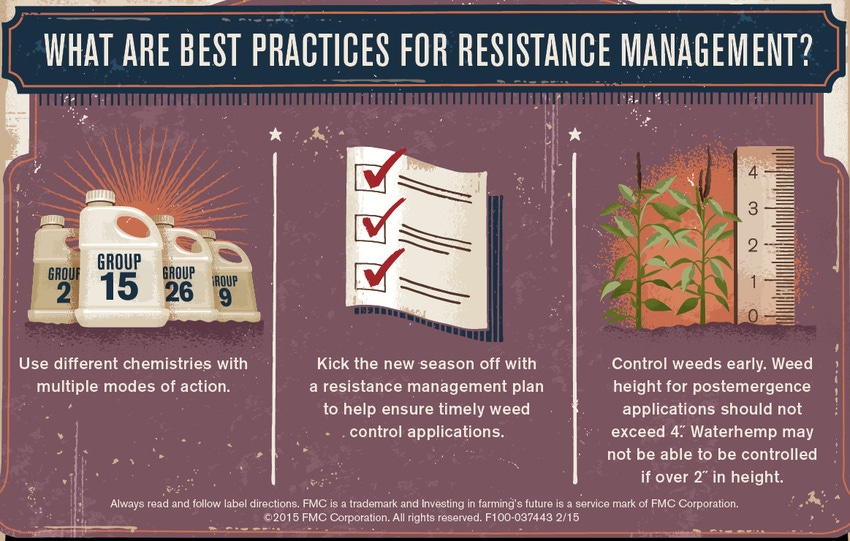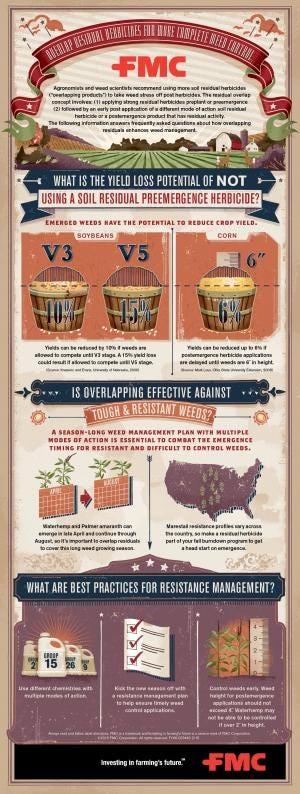March 17, 2015

Sponsored Content
Emerged weeds have the potential to reduce crop yield. Agronomists and weed scientists recommend using more soil residual herbicides at full use rates to take weed stress off non-residual postemergence herbicides by introducing multiple, effective modes of action, different chemistries and controlling weeds for longer periods of time before they emerge. This strategy is called the Overlap System.
“Weed resistance is increasing and weed characteristics are changing. To keep pace, weed management strategies have to change, too,” said Bryan Young, Purdue University associate professor of weed science.
A season-long weed management plan with multiple modes of action is essential to combat the emergence timing for resistant and difficult to control weeds. The Overlap System involves two steps – applying strong residual herbicides preplant or preemergence followed by an early postemergence application of a residual herbicide or a postemergence product that has residual activity.
“The most challenging weeds confronting farmers today have long periods of emergence and typically exhibit resistance to multiple postemergence herbicides,” said Young. “These circumstances justify the use of soil residual herbicides as the foundations for integrated management strategies.”
Herbicide-resistant weeds such as waterhemp and Palmer amaranth can emerge in late April and continue through August, so it’s important to overlap residuals to cover this extended weed emergence period. Marestail emergence patterns and herbicide resistance profiles vary across the country. By making a residual herbicide part of a fall burndown program, growers can get a head start on emergence.
“Without the use of residual herbicides for weed management, farmers are risking lost crop yield due to weed competition and continued movement toward more weed resistance to postemergence herbicides,” said Young. “Only those weed management strategies that carefully select the most effective soil residual herbicides and apply them in a manner to optimize their contribution to weed management, overlapping residuals for example, will realize the greatest benefits.”
Best practices extend from using different chemistries with multiple modes of action to start a new growing season with a resistance management plan. By controlling weeds early, growers can be more effective in optimizing results and preventing weed escapes while adhering to best practices for long-term success.
More information about the Overlap System is available online at www.FMCcrop.com/OverlapSystem.
You May Also Like





